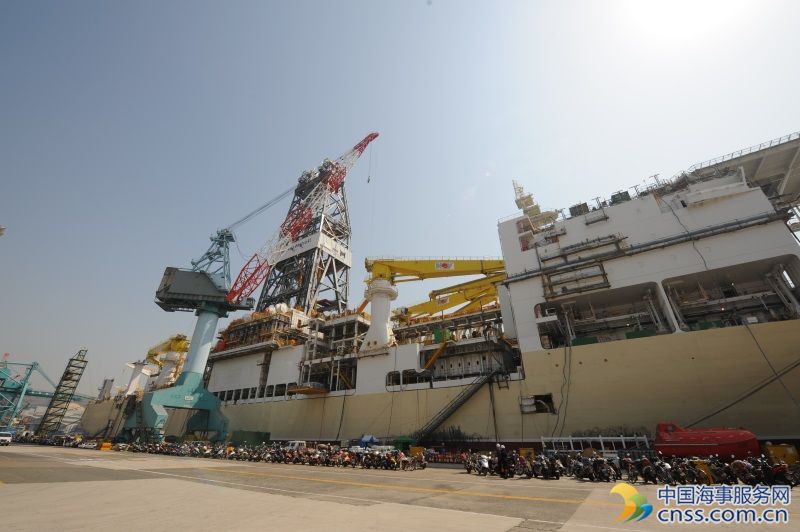‘How shipping firms can survive economic recession’

For the shipping firms and other operators in the value chain, surviving the current financial crunch requires some tactical strategies that can drive business efficiently.Already, many of the shipping firms are groaning under economic hardship with their financial records showing a profit shrinking by almost 20 per cent and above.
However, series of survival strategies rolled out by experts and industry consultants include the need to be cost efficient and make sacrifices.The Director, Vessels Value, Adrian Economakis, told The Guardian that the best way to survive the recession was to have cheap finance and inexpensive vessels, while the owners need to start making sacrifices.
Economakis said: “The industry is currently experiencing a non-symmetrical shipping cycle with relatively longer down periods. This is partly due to shipyard excess capacity (and the correlated low new building order prices) but has also been affected by availability of capital and swings in market sentiment.”
According to him, “excess shipyard capacity, combined with availability of capital and positive swings sentiment, has allowed large amounts of new buildings to be ordered and delivered. This was particularly evident in 2013/2014 where an improvement in sentiment in the dry bulk sector led to a large amount of new building orders in a very short period, which in turn, combined with lackluster dry bulk demand, have brought the market to it’s current historic lows. Interestingly, there was a delayed cyclical effect in the recent buoyant tanker market.
“Tanker rates, until recently, have been very strong, but positive long term sentiment has been lacking. Values have stayed low and new building ordering was limited. In other words people were not expecting a sustained good market for tankers, so the earnings market stayed healthy for quite long and looks like a more conventional shipping cycle.
“However, with the recent downward trend in rates and continued fall in tanker values, we may be seeing another stage in a different cycle. The best way to survive is to have cheap finance and inexpensive vessels. However with many in the industry not in this position, owners may have to start making sacrifices.” he said.
An operator of dry bulk and container ships, Euroseas, reported a net loss of $22 million for the first half of this year, compared to a net loss of $8.7 million in the same period last year. This was mainly due to a $1.4 million loss on termination of a shipbuilding contract and a $14 million impairment charge on investment in a joint venture.
Euroseas saw a 21 per cent decrease in total net revenues that amounted to $13.9 million in the first six months of this year, compared to $17.6 million in the same period of 2015, due to the decreased average number of vessels.
Sharing the strategies by his company, Chairman and Chief Executive Officer of Euroseas, Aristides Pittas, said: “While the charter markets for both sectors we operate remain challenging, we have managed to improve the liquidity of the company by restructuring or refinancing some of our loans.
Our revised loan profile combined with certain developments in our new building contracts has reduced the required capital expenditures and significantly improved the liquidity outlook of Euroseas.“We are now focused on how to take advantage of the low vessel price environment and find opportunities to expand and renew our fleet, as we have done with the replacement of M/V Cpt. Costas with a five year younger vessel for a marginally higher price,” he said.
However, an international consultancy firm, Maritime Strategies International (MSI), said excess shipyard capacity and a slowing but still considerable order books are the negative factors overhanging brighter prospects for shipping demand growth.MSI consultant, Adam Kent, said: “With shorter, sharper cycles with any bull run culled by the relative rapid delivery of legions of ships via the new dynamic shipyard capacity landscape.
“Looking at Compound Annual Growth Rates based on MSI’s assessment of demand in a number of major shipping sectors, crude tankers, containers, chemical tankers all have better prospects over the next five years.“Convert this into growth in shipping requirements by factoring in distances, speed, port times, waiting time and ballast ratios, the picture becomes even more positive for crude tankers and containers, chemical tankers and LNG carriers,” according to MSI.MSI noted that the supply side remains the source of most problems and despite some recent corrections the order book still casts a long shadow over most sectors.
Source: Guardian News
HEADLINES
- Do shipping markets want Biden or Trump for the win?
- All 18 crew safe after fire on Japanese-owned tanker off Singapore
- Singapore launching $44m co-investment initiative for maritime tech start-ups
- Cosco debuts Global Shipping Industry Chain Cooperation Initiative
- US warns of more shipping sanctions
- China continues seaport consolidation as Dalian offer goes unconditional